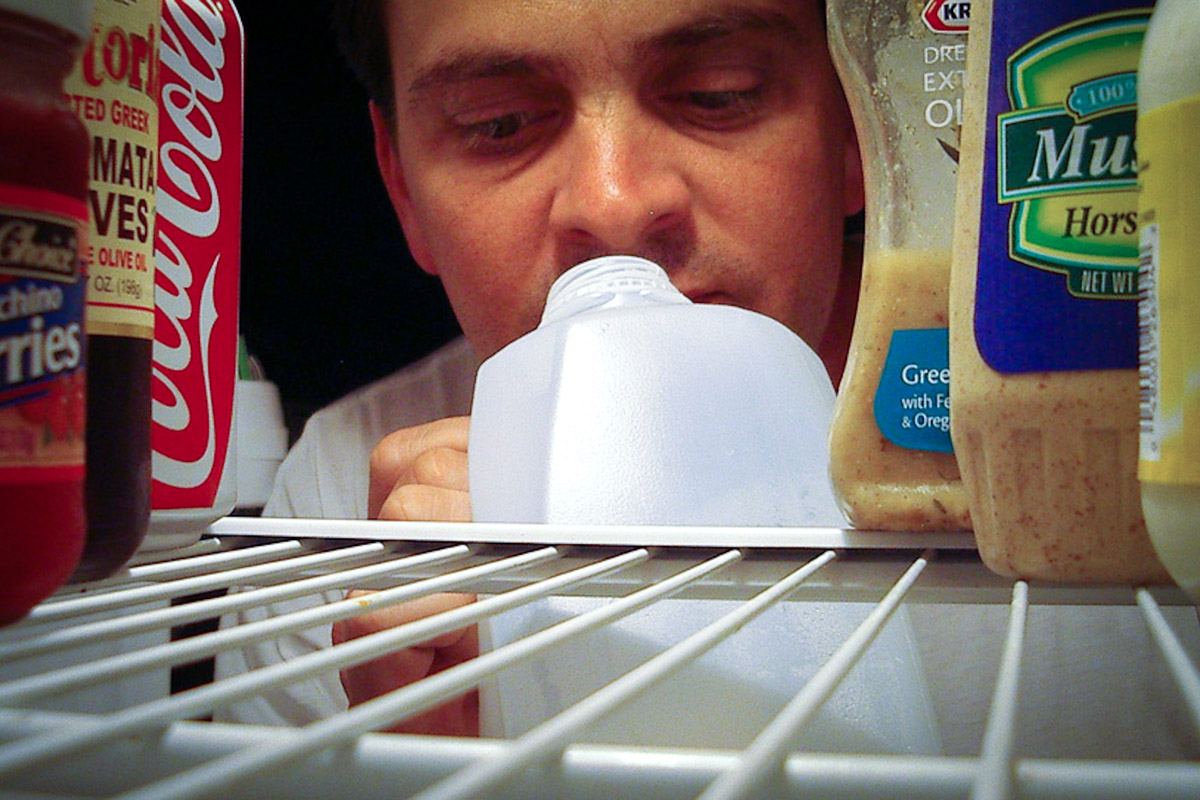Better Than a Sell-By Date, Your Phone Could Soon Tell you How Fresh Your Food Is
Pittsburgh’s Lauren Wallace is willing to go the extra mile to make sure she’s getting the freshest milk possible at the grocery store. She regularly inspects the sell-by dates on the cartons and even digs to the back of the cooler to get the best ones. And when the milk in her fridge hangs around beyond the expiration date, she doesn’t even give the milk a chance to make a case that it’s still viable.
“I automatically dump it,” Wallace says. “I wouldn’t even taste it.”
Wallace isn’t alone. According to Harvard Law School’s Food Law and Policy Clinic, 90 percent of us throw food away—either always, most of the time or occasionally—when that sell-by date arrives. But what many consumers don’t realize is that those dates aren’t intended to be hard and fast deadlines; they’re just a guess by manufacturers about how long food will stay fresh.
LISTEN: “Your Cell Phone May Soon Tell You A Lot About Food Freshness”
Tossing food out prematurely contributes to America’s food waste problem—and wastes a lot of energy, water and landfill space. But a physics professor at Indiana University of Pennsylvania thinks he’s hit on a better way to tell if that gallon of milk deserves to hang around a few more days.
Greg Kenning discovered that, when exposed to time and temperature, ultra-thin layers of the elements antimony and cobalt mimic the decay cycle of milk. He says a tiny sheet of these metals could be embedded in a label on a milk carton, storing information about a product’s freshness that could be read electronically.
“So the idea is that you would come in to buy your quart of milk, and instead of looking at the dates for the freshness, your cell phone would tell you what the freshest milk was in the whole system,” Kenning says. “You’d have a scanner in your fridge. Your fridge would tell you when it’s going to expire.”
Kenning hopes the milk sensors will appear in a store near you within a couple of years. Until then, you’ll have to rely on the sniff test to tell if the milk in your fridge is still worthy of your cereal.
Reporting by Kara Holsopple
Maple Syrup Production Could be a Casualty of Climate Change
It’s the time of year when real maple syrup lovers rejoice. But rising temperatures could eventually tap out the Northeastern maple industry.
It takes warm days and cold nights to get sap flowing through a sugar maple tree. And those are conditions that third generation maple syrup farmer Jason Blocher is seeing less and less of in February and March—the traditional time for tapping trees. Now, he usually taps as much as a month earlier than he used to, and the timing is more erratic.
“You can’t outguess Mother Nature, and she controls everything in this business,” Blocher says.
This doesn’t come as a surprise to Dave Cleaves. He’s the climate change advisor at the U.S. Forest Service—which means he’s often the bearer of bad news.
“God, in this job I’m in, people hate to see me coming,” Cleaves jokes. “They run like hell.”
About 15 years ago, the U.S. Forest Service published a Climate Change Tree Atlas, which explored the potential habitat shifts for 134 tree species. And what it found didn’t look good for sugar maples in the Northeast.
“We will see it gradually disappear—or become less prominent,” Cleaves says.
Cleaves says southern Ohio, Pennsylvania, West Virginia and Maryland are on the southern edge of large-scale maple syrup production. And as the climate changes, they’re the first places that will have problems with maple trees.
Reporting by Julie Grant

